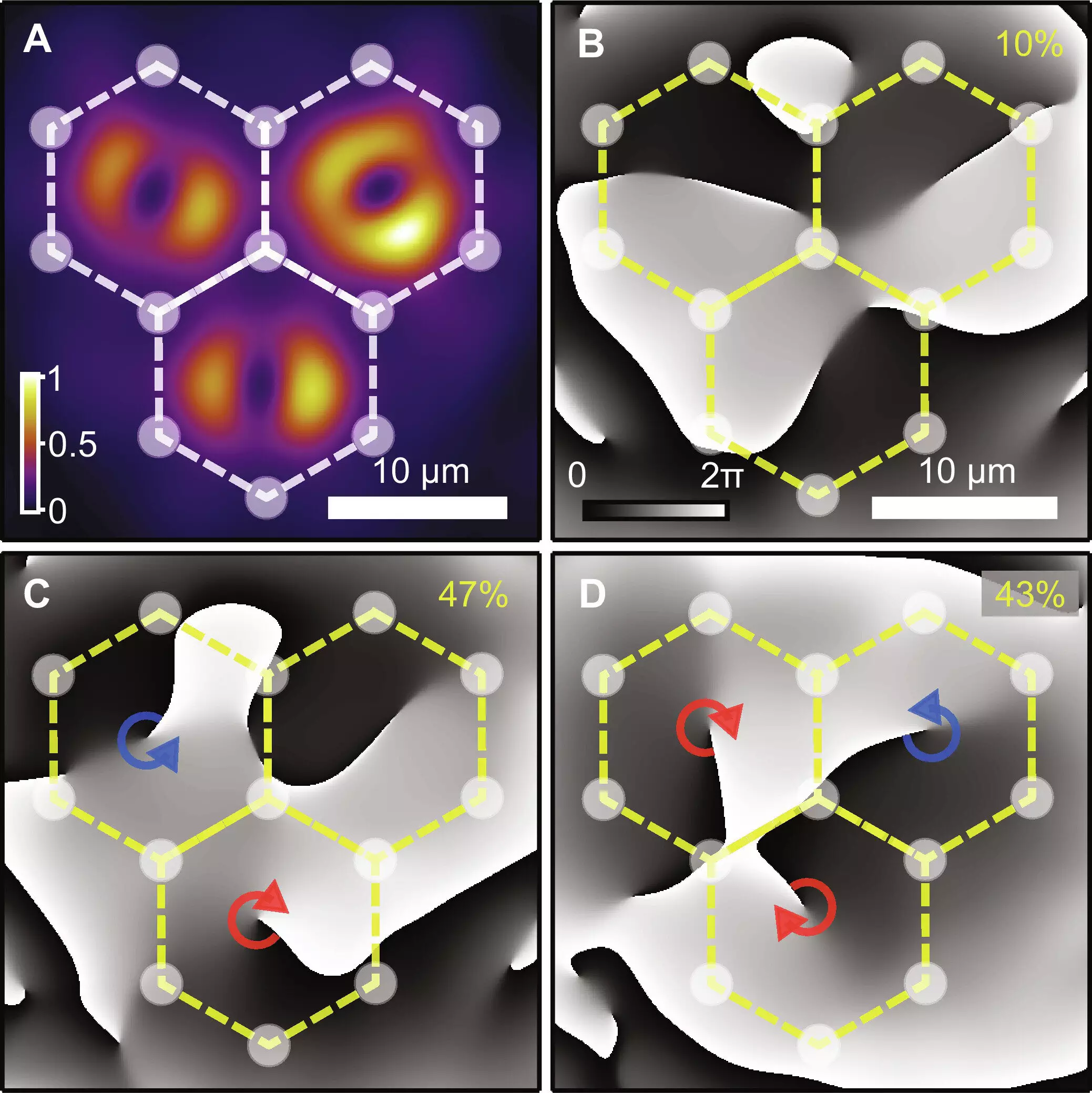In a recent study conducted by a team of researchers from Skoltech, Universitat Politècnica de València, Institute of Spectroscopy of RAS, University of Warsaw, and University of Iceland, the spontaneous formation and synchronization of multiple quantum vortices in optically excited semiconductor microcavities were demonstrated. The researchers discovered that polariton quantum vortices formed in adjacent cells of optically generated lattices exhibited an opposite topological vortex charge, effectively being “antiferromagnetically coupled.”
Artificial lattices composed of coupled polariton vortices present a unique opportunity for studying and simulating condensed matter systems in a novel way, by substituting spin angular momentum with orbital angular momentum of the polariton condensate. While the dynamics of quantum vortices in exciton-polariton systems have been a subject of research using various optical excitation methods, the formation of extensive two-dimensional lattices consisting of phase-locked quantum vortices had not been achieved until now in such a driven-dissipative system.
The researchers conducted their experiments at Skoltech, specifically in the Photonics Center’s Hybrid Photonics Laboratory under the guidance of Professor Pavlos Lagoudakis. They utilized a semiconductor planar microcavity, a structure comprising two highly reflective mirrors that form a resonator with InGaAs quantum wells in between. This configuration, known as the strong-light matter coupling regime, results in the creation of exciton-polaritons or microcavity polaritons, which are hybrid states of excitons from quantum wells and the confined cavity photons.
The team optically stimulated a semiconductor microcavity sample by employing a patterned laser beam using a spatial light modulation technique they had recently developed alongside researchers from the University of Southampton. By shaping the laser beam into an array of tightly focused Gaussian beams arranged in a hexagonal lattice, they were able to control the formation of polariton condensates within the lattice cells. Through their experiments, they observed that the polaritons condensed within the lattice cells under specific conditions, forming vortex states with equal probabilities for both vortex (topological charge of +1) and antivortex (topological charge of -1) configurations.
One of the key observations made by the researchers was the interaction between vortices in neighboring cells, leading to the formation of stable solutions with opposite topological charges in each cell. This phenomenon consistently resulted in the pairing of vortex-antivortex or antivortex-vortex configurations. Further investigations into the physics of the condensates within triangular structures and larger lattice formations revealed a tendency towards extended antiferromagnetic order, indicating synchronization beyond small clusters of vortices.
To confirm their hypothesis of extended antiferromagnetic order within the triangular lattice of vortices, theoretician Dr. Helgi Sigurðsson from the University of Warsaw conducted measurements of the vortex charge (orbital angular momentum) across all lattice cells in multiple independent realizations of the lattice. By correlating these measurements with the low-energy configurations of the Ising spin Hamiltonian, the researchers found significant correlations between the observed orbital angular momentum in stable vortex solutions and the low-energy states of antiferromagnetically coupled Ising spins.
The successful demonstration of the formation and synchronization of quantum vortices in semiconductor microcavities opens up new possibilities for investigating complex condensed matter systems and studying the behavior of vortices in driven-dissipative environments. This research not only sheds light on the physics of polariton condensates but also highlights the potential of optical excitation techniques in manipulating quantum phenomena at the nanoscale.


Leave a Reply